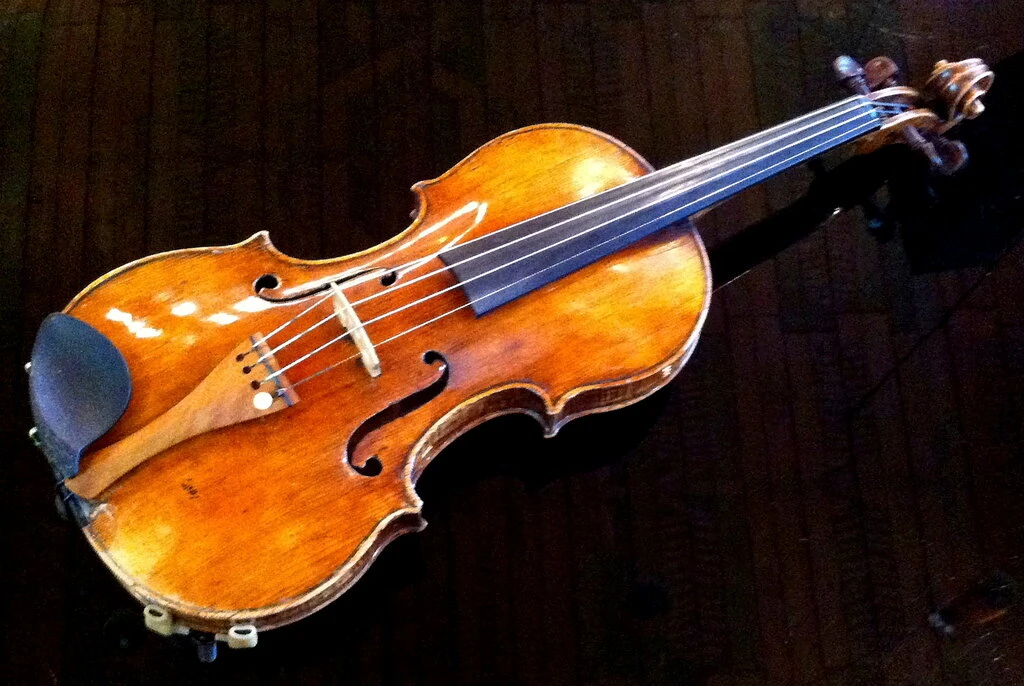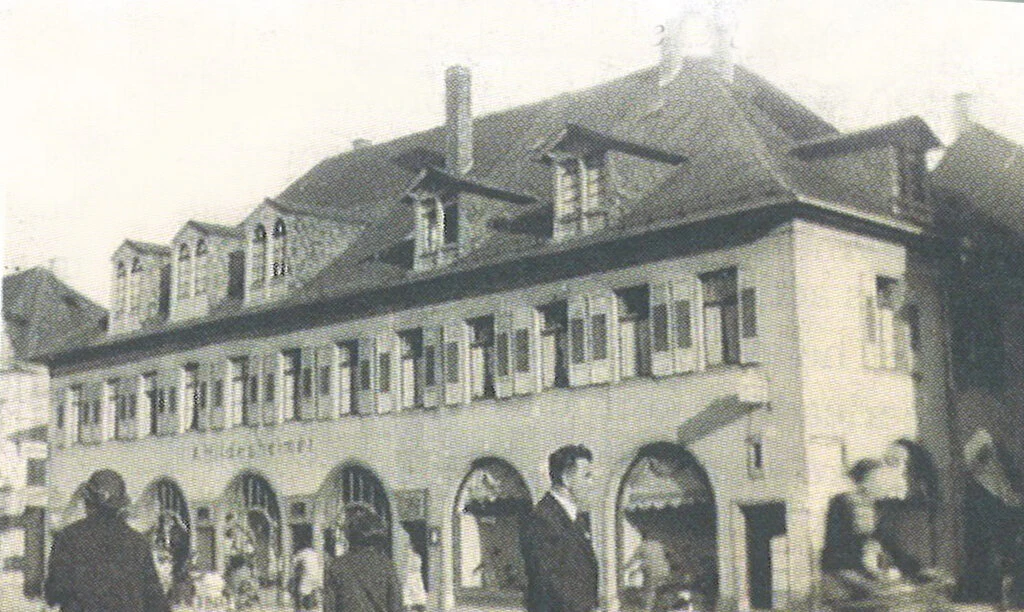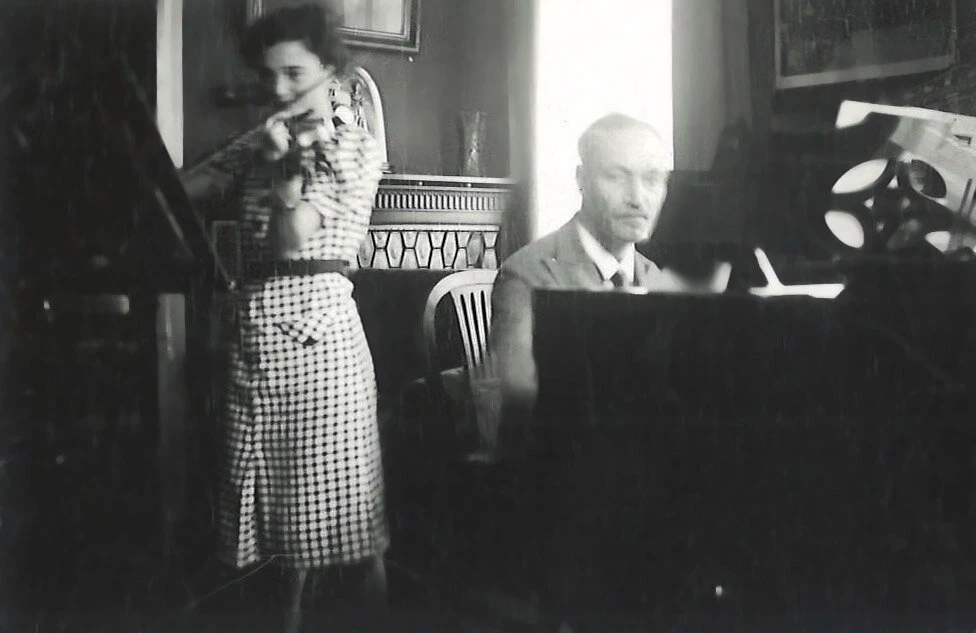News:
Rare Violin Tests Germany’s Commitment to Atone for Its Nazi Past
By Catherine Hickley
The instrument’s holders refuse to compensate the heirs of a Jewish music dealer, jeopardizing a system for restitution that has been in place for nearly two decades. The 1706 violin from the workshop of Giuseppe Guarneri at the center of the restitution dispute in Germany.
The 1706 violin from the workshop of Giuseppe Guarneri at the center of the restitution dispute in Germany.
BERLIN — No one knows why Felix Hildesheimer, a Jewish dealer in music supplies, purchased a precious violin built by the Cremonese master Giuseppe Guarneri at a shop in Stuttgart, Germany, in January 1938. His own store had lost its non-Jewish customers because of Nazi boycotts, and his two daughters fled the country shortly afterward. His grandsons say it’s possible that Hildesheimer was hoping he could sell the violin in Australia, where he and his wife, Helene, planned to build a new life with their younger daughter.
But the couple’s efforts to get an Australian visa failed and Hildesheimer killed himself in August 1939. More than 80 years later, his 300-year-old violin — valued at around $185,000 — is at the center of a dispute that is threatening to undermine Germany’s commitment to return objects looted by the Nazis.
The government’s Advisory Commission on the return of Nazi-looted cultural property determined in 2016 that the violin was almost certainly either sold by Hildesheimer under duress, or seized by the Nazis after his death. In its first case concerning a musical instrument, the panel recommended that the current holder, the Franz Hofmann and Sophie Hagemann Foundation, a music education organization, should pay the dealer’s grandsons compensation of 100,000 euros, around $121,000; in return, the foundation could keep the instrument, which it planned to lend to talented violin students. An undated photo showing Felix Hildesheimer’s music store in Speyer, Germany. The store occupied the first floor of the building, and the Hildesheimers lived on the floors above.
An undated photo showing Felix Hildesheimer’s music store in Speyer, Germany. The store occupied the first floor of the building, and the Hildesheimers lived on the floors above.
But the foundation is refusing to pay. After first saying it couldn’t raise the funds, it is now casting doubt on the committee’s ruling. In a Jan. 20 statement, the foundation said “current information” suggested that Hildesheimer was not forced to give up his business until 1939, instead of 1937, as previously thought. So, the statement added, “we should assume that the violin was sold as a retail product in his music shop.”
Last week, the Advisory Commission lost patience and issued a public statement aimed at raising pressure on the Hagemann Foundation to comply with its recommendation.
“Both sides accepted this as a fair and just solution,” the statement said, accusing the foundation of not showing a “serious commitment to comply with the commission’s recommendation.” The efforts to contest the recommendation — four years after it was issued — by suggesting that the Jewish dealer sold the violin under perfectly normal conditions mean “the foundation is not just contravening existing principles on the restitution of Nazi-looted art,” the panel said, “it is also ignoring accepted facts about life in Nazi Germany.”
The foundation’s refusal to pay is jeopardizing a system for handling Nazi-looted art claims that has been in place for nearly two decades and has led to the restitution of works from public museums and, in 2019, two paintings from the German government’s own art collection.
Lawmakers set up the panel in 2003, after endorsing the Washington Principles, a 1998 international agreement calling for “just and fair” solutions for prewar owners and their heirs whose art had been confiscated by the Nazis. The families of Jews whose belongings were expropriated rarely succeed in recovering looted cultural property in German courts, because of statutes of limitation and rules that protect good-faith buyers of stolen goods. So the Advisory Commission, which arbitrates between the victims of spoliation and the holders of disputed cultural property, is often claimants’ only recourse.
But the commission is not a court and has no legal powers to enforce its recommendations, explained Hans-Jürgen Papier, the panel’s chairman and a former president of Germany’s Constitutional Court, in an interview.
“Instead it has the function of a mediator,” he said. “So far we have been able to count on public institutions to submit to the commission’s processes and implement its recommendations,” he added. “If that doesn’t work anymore, it’s unacceptable from our perspective.”
After Hildesheimer’s purchase, the Guarneri violin’s tracks disappear until 1974, when it resurfaced at a shop in the city of Cologne, western Germany, and was purchased by the violinist Sophie Hagemann. She died in 2010, bequeathing it to the foundation she had set up to promote the work of her composer husband and support young musicians.
The Hagemann Foundation, which has since restored the violin, began to investigate its prior ownership after her death. On noting the provenance gap from 1938 to 1974, it registered the instrument on a German government database of Nazi-looted cultural property, in the hope of finding more information about the Hildesheimer family. An American journalist tracked down the music dealer’s grandsons, and the foundation agreed to submit the case to the Advisory Commission. An undated photograph from the mid-1930s showing Felix Hildesheimer, right, playing piano accompaniment for his younger daughter, Elsbeth
An undated photograph from the mid-1930s showing Felix Hildesheimer, right, playing piano accompaniment for his younger daughter, Elsbeth
When the commission ruled, in 2016, that the violin was likely to have been sold under duress, or seized after Hildesheimer’s death, the Hagemann Foundation accepted its terms and also promised that the students to whom it lent the violin would give regular concerts in Hildesheimer’s memory.


